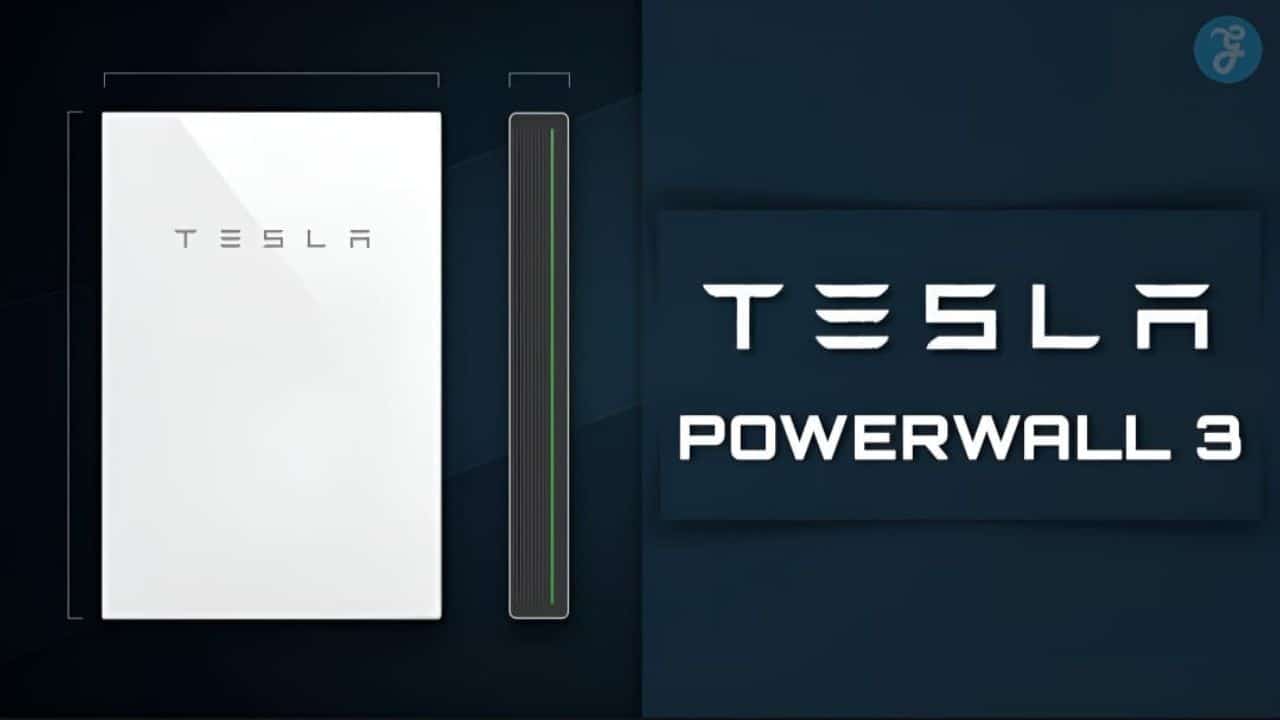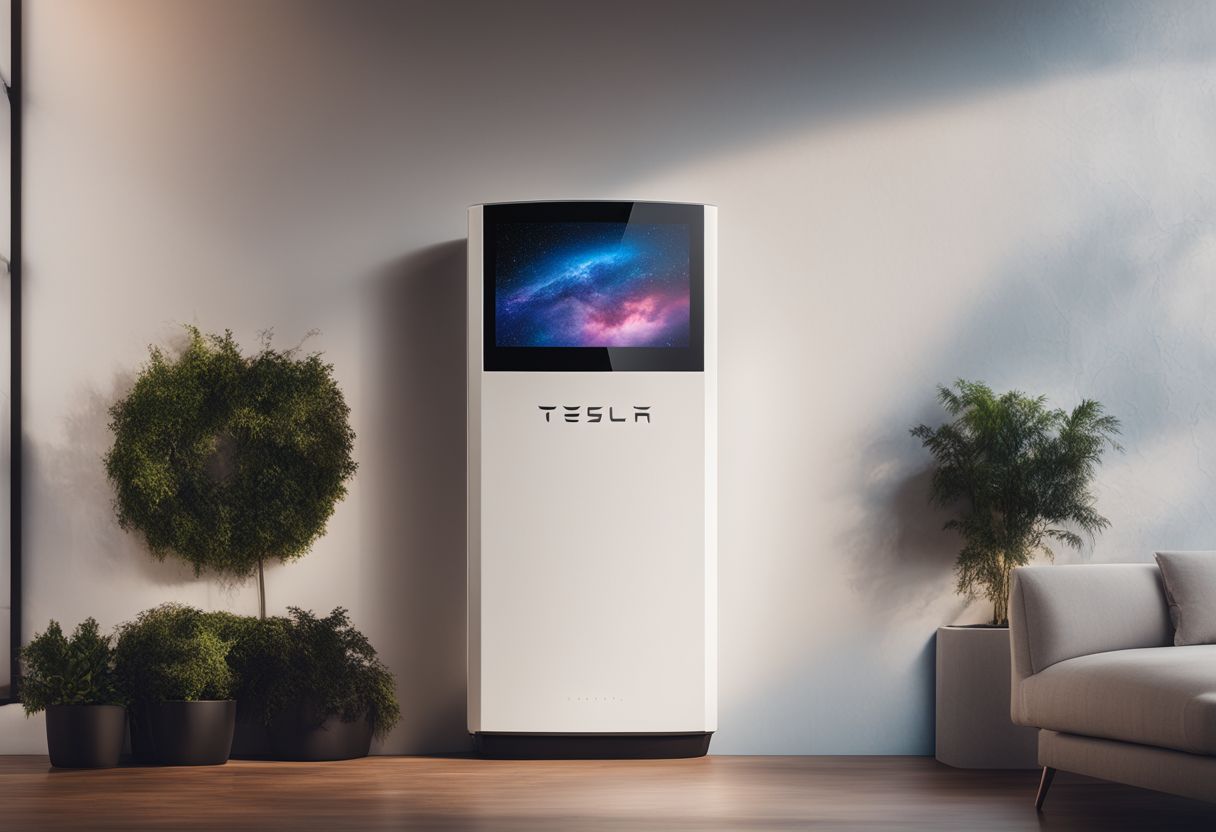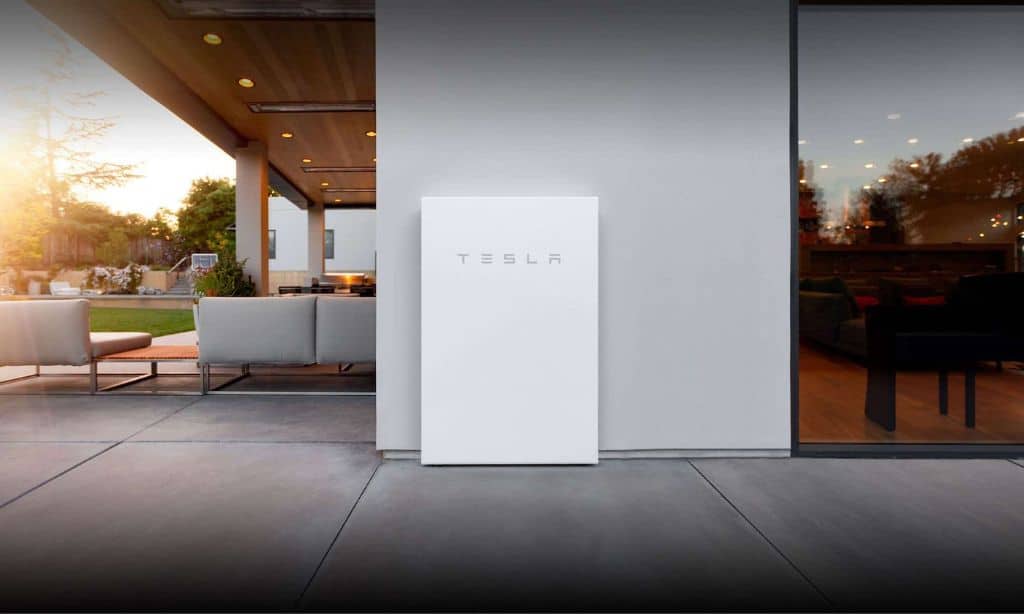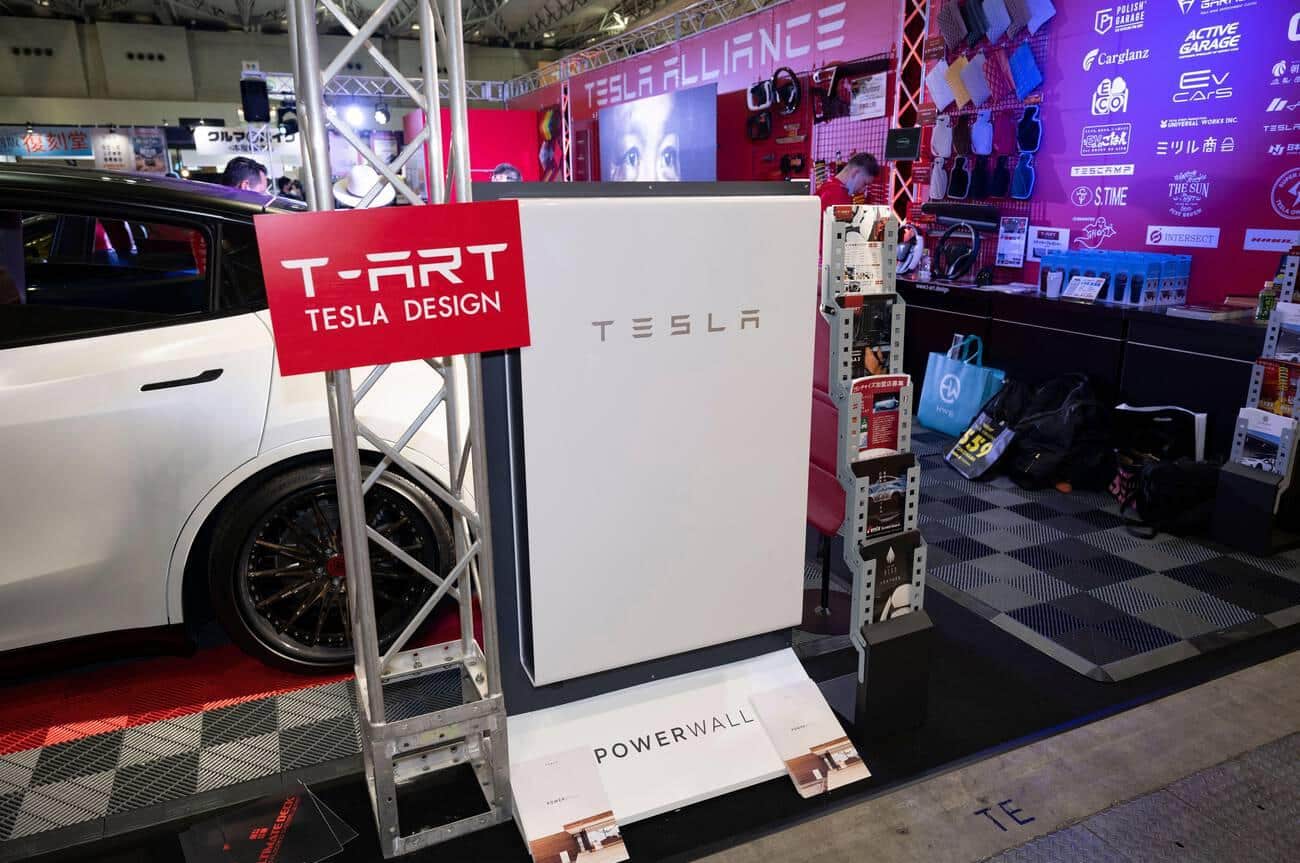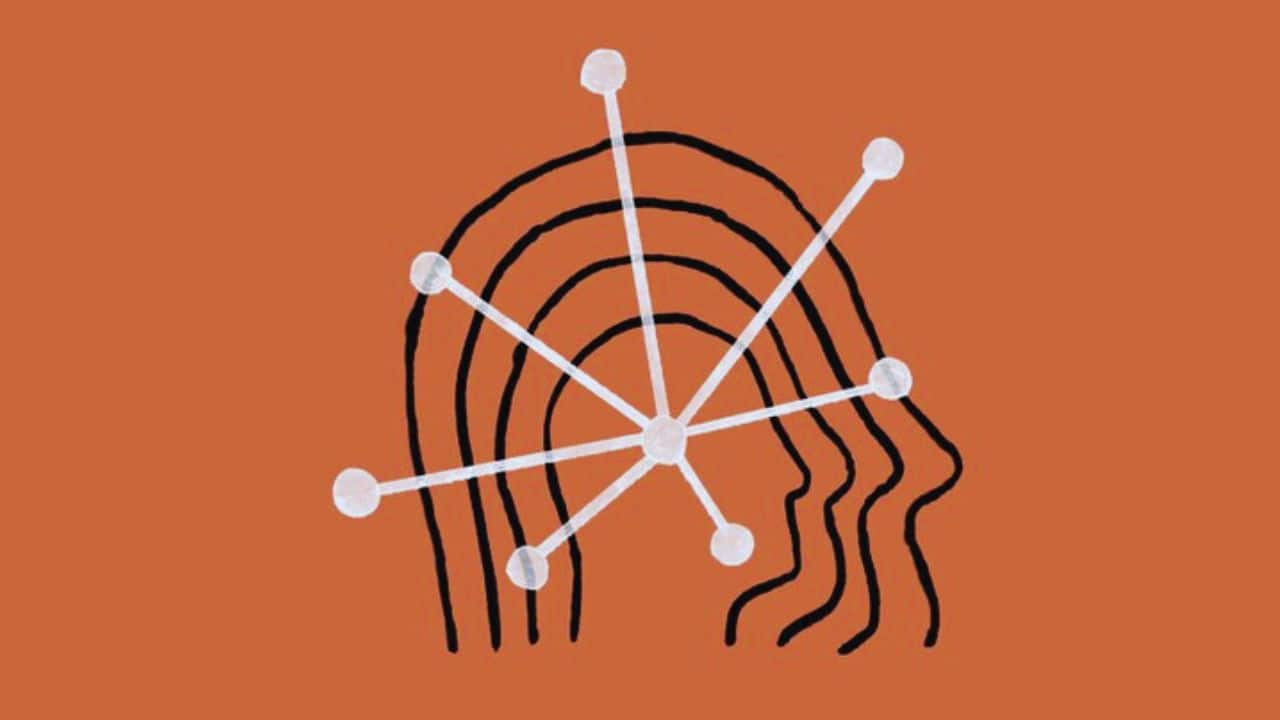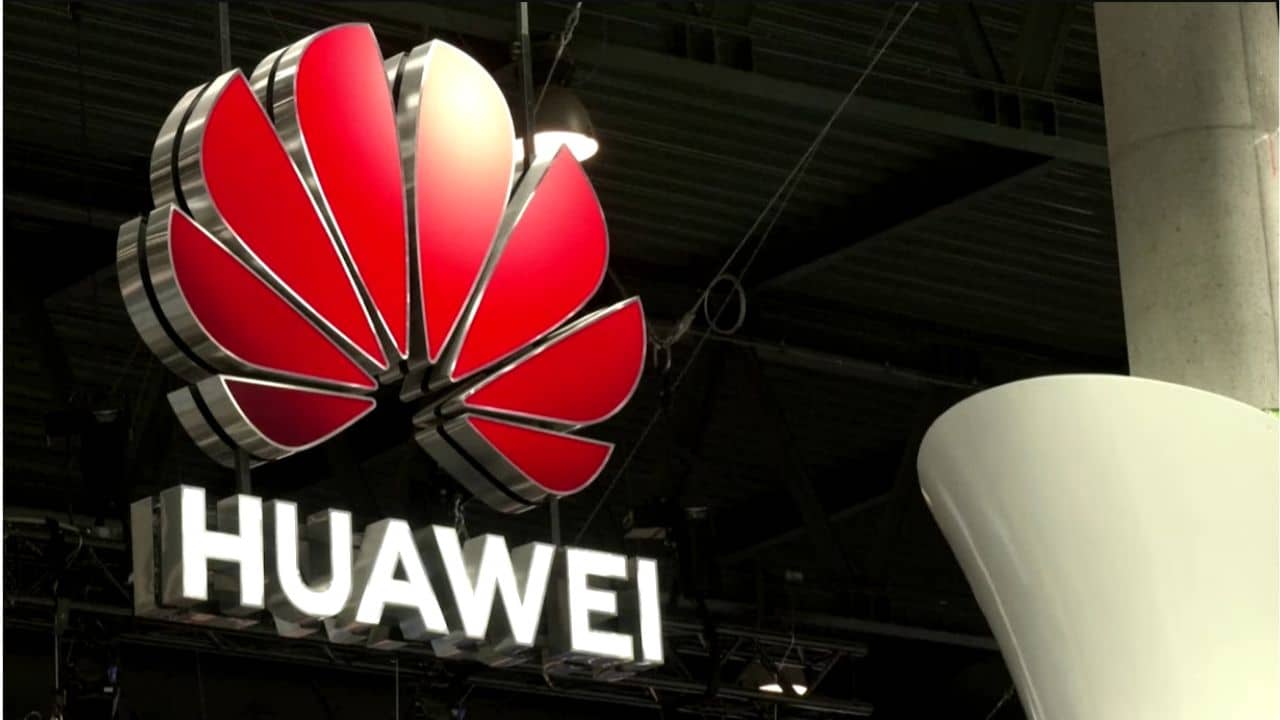Are you looking to learn everything about the newest Tesla Powerwall 3? With its massive increase in power output from previous models combined with advancements in energy storage technology, it is time to look into the performance, features, and pricing of some of the most powerful batteries available on the market.
This article will give you insight into the latest updates of Powerwall 3’s availability in 2023 and its key features like battery chemistry, ease of use, and price comparison.
All these details make TeslaPowerwall3 a perfect choice for homeowners seeking energy independence or reliable backup during outages. Get ready to explore what makes Tesla’s third-generation version one of the best solar home battery solutions!
Content Highlights
- Powerwall 3 offers 11.5 kW of power output and 13.5 kWh energy storage capacity reserve, making it the market’s most powerful home energy storage option.
- It comes with improved features such as easy installation, advanced inverter technology for peak performance needs, and streamlined monitoring capabilities through an LCD touchscreen display.
- Tesla Powerwall 3 will be released in 2024, possibly using Lithium Iron Phosphate (LFP) batteries, and has a starting estimated price range of $6 to 9K USD per unit depending on individual setup requirements, including taxes and additional fees.
- By investing in Tesla’s powerhouse release, homeowners enjoy greater control over their electricity usage while reducing dependence on fossil fuels like natural gas or coal-powered plants, backup power solutions during outages, and increased efficiency savings versus older models when integrating solar panel systems into home setup plans.
Overview of Tesla Powerwall 3
Tesla Powerwall 3 has 11.5 kW of power, significantly improving both size and aesthetics compared to its predecessors.
Power output
Tesla Powerwall 3 has improved significantly over its predecessor, the Powerwall 2. It now offers an output of 11.5 kW compared to 9.6 kW in version two and a peak backup power of 15.4 kW, higher than the 10kW offered by version two.
With this increase in power and delivery capability comes significant performance benefits for customers who require larger energy requirements and longer runtimes between charging cycles.
A larger energy capacity allows consumers to store more solar-generated or grid electricity for later use, particularly during periods when demand is high but supply is low such as extended cold weather or blackouts caused by unexpected outages.
Size and aesthetics
The Tesla Powerwall 3 has a smaller form factor than its predecessor, the Powerwall 2. With dimensions being researched at this time, it promises to take up little wall space in homes that install it.
The aesthetics of the power storage device have also been improved with the sleek matte white body and understated design, which blends seamlessly with other home fixtures and decor.
In addition, an LCD touchscreen display adds a modern touch allowing easy access for monitoring energy usage, either directly on the power wall or from a mobile app. This visual enhancement helps ensure homeowners can properly track their energy use while giving peace of mind when using green renewable sources of energy such as solar or wind turbines.
Ease of use
Tesla Powerwall 3 is built with customers in mind, featuring an intuitive user interface and streamlined installation process that simplifies solar energy setup. The control display provides real-time insight into the home’s energy usage, enabling homeowners to make necessary adjustments easily.
The Powerwall 3 can also be managed remotely through a secure network connection on their mobile device or internet browser. In addition, it comes equipped with safety sensors and Bluetooth-enabled communication for extra security measures and easy servicing.
All of these features contribute to the system’s overall ease of use, making managing your solar power storage quick and worry-free. With Tesla’s ever-evolving software updates, their commitment to customer service ensures continued efficiency even after your purchase has been made.
Price
The starting price of the Tesla Powerwall 3 is $11,500 for a single unit. The cost can vary depending on location, installation fees, and additional taxes. When bought in bulk or when purchased with a solar panel system, discounts may apply, bringing the cost down to around $8,700.
Understandably installing multiple units can be more expensive than one; however, cost savings compared to purchasing individual units are still available when buying from Tesla Energy.
Latest Updates and Availability of Powerwall 3
Get up to speed with the Tesla Powerwall 3’s official launch date, specifications, battery chemistry, and availability of customers in 2024 – dive deeper into this informative blog!
Official launch and specifications
The Tesla Powerwall 3 is the latest innovation in energy storage to be released. It boasts an energy capacity of 13.5 kW and a continuous on-grid power of 11.5 kW, making it perfectly suited for complete home backup during outages or providing homeowners with increased control over their personal energy usage and independence from traditional utility companies.
The Powerwall 3 has several improved features over its predecessors that make it more attractive while still giving users access to Tesla’s reliable technology – continual monitoring and advanced inverter technologies paired with the battery chemistry selected for this version allow for a powerful yet user-friendly experience.
As mentioned earlier, availability of the new model will start within 2024, although specs are still unknown at this time due to refining processes in the testing stages – so far, customers have had positive experiences with ownership, including running multiple appliances as well as entire homes without interruption thanks to increasing steady output levels maxing out at peak demands available through only one single unit installation.
Battery chemistry used
The Tesla Powerwall 3 is expected to use new battery chemistry when the energy system launches in 2024. Although there have been no official announcements from Tesla regarding the specific type of battery used in its home energy storage systems, some speculate that it may be powered by Lithium Iron Phosphate (LFP) batteries.
LFP batteries are known for their safety and stability features and high charge-discharge rate capabilities, making them ideal for long-term operations or targeted peak performance needs.
The current Powerwall 2 model uses Lithium NMC (Nickel-Manganese-Cobalt) battery technology which offers highly efficient rechargeable capabilities, improved thermal management, and longer cycle life than LFP cells making it better suited for applications where much more frequent charging is required, such energy storage systems with a solar panel integration.
Availability to customers starting in 2024
Tesla is expected to release the Powerwall 3 in 2024, but pricing and further details remain yet to be determined. According to Tesla’s official website, customers can apply for early access when availability starts later, suggesting that the company is working on refining manufacturing and operations before its full launch.
There has been speculation about the price, with an estimate of between $6-9K USD per unit based on previous versions of Powerwall technology. Ultimately it may take some time before it reaches homes worldwide since this upcoming product still requires confirmation from field tests and studies before implementation.
Benefits and Solutions of Powerwall 3
Gain greater energy independence with on-site storage and backup power to support essential electrical systems during outages.
Energy independence for homeowners
The Tesla Powerwall 3 is a big step forward for homeowners who are seeking energy independence. With the Powerwall 3, users can enjoy higher storage capacity and power output than many other solar battery systems on the market today.
This means that it’s easier to store renewable energy sources such as solar energy produced by photovoltaic (PV) panels and access them when needed without relying on the grid or traditional fuel sources.
Moreover, having backup power during outages is now possible with the Powerwall 3’s enhanced capabilities providing reliable power whenever necessary regardless of external conditions.
By investing in Tesla’s powerhouse release, homeowners enjoy greater control over their electricity usage while also reducing dependence on fossil fuels like natural gas and coal-powered plants.
Backup power during outages
Tesla Powerwall 3 provides homeowners with seamless backup power during outages, disconnecting from the grid and restoring battery-stored electricity to the home in a fraction of a second.
It can support the entire home, including 120V loads such as lights, providing peace of mind that all essentials will remain powered even in an outage. Its quick switchover time and ability to power electric vehicles give you energy independence and keep your family safe no matter what happens.
Moreover, installation is extremely easy – Powerwall simply plugs into any standard wall outlet for intuitive do-it-yourself setup or professional installation.
Integration with solar panels
The Tesla Powerwall 3 offers an efficient and effective way to integrate your home’s solar panel system into the Energy Storage System for energy independence. With a broad range of compatible Solar Solutions, you can easily install or upgrade your existing setup with Powerwall energy storage systems to maximize the clean energy output from your photovoltaic panels.
This integration allows homeowners to both store excess solar-generated electricity and utilize it on demand when needed. Taking advantage of its fast charge capability, up to 14kW per hour could be added to your battery bank just by charging using PV grid-connected power from a standard residential rooftop array.
To effectively manage multiple components in one place, more sophisticated setups offer remote monitoring featuring easy access control and automated programming so that any user data is always within reach at all times, no matter where they are located.
Comparison to Previous Powerwall Models
The Powerwall 3 offers improved output and capacity over previous Powerwall models, with enhanced features and functionality at a more competitive price point.
Power output and capacity improvements
Tesla’s new Powerwall 3 offers a significant power output increase compared to its predecessor, the Powerwall+, which maxed out at 9.6 kW and 13.2 kWh energy capacity, respectively. The company has upped the ante with this latest offering: Powerwall 3 can now deliver up to 11.5 kW of continuous electric power while still maintaining an impressive 13.5 kWh energy storage capacity reserve — a vast improvement over previous models on both accounts!
Furthermore, Tesla’s PowerWall 2 currently holds the charge for 35 hours during peak load requirements, but their upcoming model is expected to handle much longer than that when set for daily use after charging overnight off-peak electricity rates – hinting at drastically improved battery performance overall.
Enhanced features and functionality
The Tesla Powerwall 3 is expected to have a range of improvements and new features compared to previous models. The current version, the Tesla Powerwall 2, has taken battery technology one step further with its advanced liquid cooling system and powerful integrated inverter.
With the upcoming launch of the third model in 2024, updates are expected to focus on improving power output and capacity as well as adding additional features for ease of use. This could include more powerful software that can be integrated seamlessly into home energy systems or improved mobile apps so users can keep track of their energy usage from anywhere.
More information will emerge closer to the release date, but whatever changes are made will revolutionize how we store renewable energy at home.
Pricing differences
The Tesla Powerwall 3 comes with marked pricing differences from previous models. Unlike earlier versions, the cost per battery decreases when purchasing in bulk which helps reduce the overall cost.
The exact Tesla Powerwall price can vary depending on location and additional fees such as taxes. Currently, in 2023 Tesla offers the lowest base price of $8,700 before additional fees and taxes.
It also provides a discount for customers who decide to get multiple batteries at once, making it a more affordable and attractive solution over time compared to other home energy storage solutions on the market today.
Installation and Maintenance Considerations
A professional, cost-effective installation process can be expected for the Powerwall 3; learn more details in this blog post.
Process of installation
Installing a Tesla Powerwall 3 requires design and permits, which can take some time to coordinate. The installation requires input from certified electricians, building inspectors, and utility companies.
Additionally, Tesla offers resources for installers to learn about the components of the system, the location of equipment, and important safety considerations. Single Powerwall installations have been reported to cost around $15-18k when done through a third-party installer. However, this may vary depending on individual requirements, such as added equipment or the project size.
For more complex grids with multiple vehicles and batteries, it is even more likely that installation costs will be higher. Many homeowners prefer to use an outside installer to guarantee quality workmanship and safety while working with electricity, so no matter where they are in the process – research should always come first before settling into any decision process for Powerwall 3 installation projects.
Maintenance requirements and recommendations
Regular maintenance of the Powerwall 3 is essential for optimal performance and longevity. It’s important that the unit be cleaned and inspected periodically to ensure optimum efficiency, battery life, safety, and reliability.
Tesla recommends an inspection every 6 months as well as full maintenance after 2 years or 10k cycles. Cleaning involves wiping down the entire unit surface with a soft cloth using warm water and lightly lubricating contact points to prevent any unnecessary corrosion.
Additionally, it’s recommended that all components are visually inspected for signs of wear & tear, such as cracks or mechanical damage caused by overloading or electrical arcs due to high voltage differences between separate cables entering into the same enclosure or system element from outside sources like solar panels connection box, etc.
Furthermore, internal connections should also be checked monthly for signs of loose contacts (loose screwings)which could create insulation/contact resistance problems leading to possible overheating issues regarding current overloads detected on those wiring assemblies throughout technical capacity checks performed periodically by auto diagnostic systems installed on-site home appliances during energy monitoring activities towards smart technology standards alignment if integrated internally Accordinly.
Customer Reviews and Experiences
Read what people say about their experiences with the Powerwall 3 and see how it has met their reliable home energy source needs.
User feedback and satisfaction
Tesla Powerwall 3 has, overall, received positive reviews from users who have installed and used the product in their homes. Many reviewed the installation process as user-friendly and easy to install, not requiring the hiring of professional help like other power systems on the market.
The visual interface is also praised for being intuitively designed and can be easily operated by owners. In addition, most customers reported great satisfaction with its performance and user experience when integrated into a solar panel system.
Reviews on usability ranged from stable operation to reports of uninterrupted energy regardless of external factors like temperature or surges in demand. With these benefits combined, many users reported energy independence and a feeling of ameliorated safety during unexpected outages or calamities such as wildfires or floods.
Real-world performance and reliability
Customers have exceptionally well received Tesla Powerwall 3. In customer reviews and experiences, the product is often praised for its ease of installation, plenty of user-friendly features, and overall performance.
Customers who have installed the Tesla Powerwall 3 attest to its reliable battery backup systems during outages, along with the near-instantaneous resumption of power when a source disruption occurs.
Furthermore, several users mentioned that their confidence in their solar system’s ability to offer full energy canvas was increased significantly after switching from traditional lead acid batteries to the Tesla Powerwall solution.
Most customers were also satisfied with how long it lasts before requiring maintenance and reported they had excellent experiences using their new solar technology setup powered by a Tesla Powerwall unit or units.
Future Developments and Innovations in Powerwall Technology
Explore the potential advancements in battery chemistry, smart home system integration capabilities, and Tesla’s energy ecosystem expansion for a more efficient energy storage system.
Keep reading to find out what this exciting technology holds!
Potential advancements in battery chemistry
Potential advancements in battery chemistry could pave the way for a more efficient and reliable Powerwall 3. As government funding increases in 2023, there is hope that new battery chemistries with improved capabilities will become available to store energy from renewable sources such as solar power easily.
In addition, greater technological advancements could result in increased energy density — meaning even longer storage life — while slashing production prices. These improvements will be essential for residential energy applications and powering electric vehicles over long distances on a single charge.
New advances may bring about higher performance and capacity batteries, which are lighter in weight, have faster recharging time, and have lesser detrimental environmental effects from their manufacturing process.
Integration with smart home systems
Through seamless integration with smart home systems from leading tech companies like Amazon, Apple, and Google, the Tesla Powerwall 3 enables users to monitor, automate, and remotely control their energy use.
Consumers can access an intuitive 24/7 portal that will allow them to monitor their energy usage in real time from anywhere in the world. With this advanced level of monitoring and automation, homeowners can make informed decisions about how they are using energy – enabling smarter choices for maximizing efficiency and cost savings.
Smart integrations with Energy Link help track surplus solar production or draw excess power from the grid when needed so customers can access reliable backup power during outages.
Expansion of Tesla’s energy ecosystem
Tesla is evolving its energy ecosystem beyond the Powerwall 3, exploring different technologies and ways to reduce carbon emissions. Tesla has begun investing in other energy solutions, such as electric vehicle charging stations, which it plans to have 1,500 of deployed by 2023.
Additionally, its solar roofing tiles provide a sustainable way for homeowners to produce their own clean electricity through renewable sources like sunlight. This, combined with Powerwall 2, transforms how energy generation and storage works for homes and businesses.
Furthermore, advancements in battery chemistry from Tesla will allow users even more control over their decision-making when it comes to powering houses or individual appliances. Integrating this technology with smart home systems allows customers unprecedented control and access while reducing costs associated with power companies – further driving down emissions across one’s home theater setup without sacrificing features or convenience.
Frequently Asked Questions about Powerwall 3
Here readers can find answers to frequently asked questions on topics such as battery lifespan, compatibility, financing, and installation.
Battery lifespan and warranty information
Tesla Powerwall 3 is designed to provide long-term service and comes with a 4-year warranty if the battery is registered and connected to the internet. The length of lifespan varies depending on proper maintenance, usage, environmental factors, as well as respective installation procedures.
With proper care and maintenance, the lifespan of Tesla Powerwall 3 can last up to 20 years or more. Additionally, the inverter in the Tesla Powerwall has its own 12.5-year manufacturer’s warranty which also impacts the overall longevity of this device.
It is, therefore, important for homeowners seeking efficient power storage options to consider these factors when weighing their choices regarding installing their system.
Compatibility with different electrical systems
The Tesla Powerwall 3 is designed to work with any system architecture, from grid-connected to off-grid. It has the ability to adapt and be integrated into different electrical systems quickly and efficiently.
This means that anyone who wants a home battery storage solution can have one, regardless of whether they’re starting anew or retrofitting an existing installation. Thanks to its versatile design, there is no need for additional hardware when installing the Powerwall 3, as it makes sense both in terms of cost savings and efficiency gains.
In addition, this compatibility also allows users access to renewable energy sources such as solar power without having to modify entire systems – simply connect the Tesla Powerwall 3 to their setup, and they’ll enjoy reliable electricity day & night! This feature makes it convenient for people looking to become more energy-independent while reducing costs & emissions at the same time.
Financing and incentives
A Tesla Powerwall 3 is expensive, but its long-term energy savings and other benefits can be worth it. Financing options are available to help homeowners spread out their payments over a period of time.
Additionally, depending on the customer’s location, they may qualify for subsidies or discounts from their state or local government as well as utility company incentives. These programs have varying eligibility requirements and offer different amounts of incentives, so it’s important for customers to check what is available in their area before purchasing.
Eversource passes along incentive payment information to Tesla; however, the exact timing regarding when these payments are made is unclear. California residents should be aware that PG&E offers incentives through its Self-Generation Incentive Program (SGIP), with increased levels of incentive payments available based on certain criteria, such as installation deadlines being met or battery performance data being tracked in an approved fashion.
Installation requirements and limitations
The installation requirements for the Tesla Powerwall 3 are highly dependent on the particular electrical system it will be used with since all installations require a professional electrician.
The space required to install this latest model should also be taken into consideration, as only certain wall spaces that can bear additional weight may suffice. Generally, at least twice the normal wall stud spacing is required to fit and secure the unit properly.
Additionally, because of current size limitations on these types of batteries in total maximum kilowatt-hours per house available from one residential connection point, there is a limit to how many Powerwalls can potentially be installed depending on what type of energy delivery system you have in your home or business.
Ease of Use
The Powerwall 3 boasts a user-friendly interface with intuitive controls and a straightforward installation process.
User-friendly interface and installation process
Tesla Powerwall 3 is designed to make energy management for homeowners quick and effortless. The user-friendly interface allows users to easily monitor and control their energy usage in clear, easy-to-understand graphs and readouts.
With intuitive functionality, most homeowners can set up the system without any trouble within an hour. And if they ever need assistance with setup or maintenance, Tesla’s specially trained technicians are available to help out remotely whenever needed.
Additionally, installation of the Powerwall 3 is very straightforward with a simplified approach that requires fewer steps than other home energy solutions today – no extra wiring is needed! This makes setup significantly faster and more reliable than competitors, making it ideal for busy households looking for hassle-free renewable energy options.
Monitoring and control features
The Tesla Powerwall 3 comes equipped with energy monitoring, metering, and smart controls that can be customized to the user’s needs through the Tesla app. Not only does this system learn from the user’s energy usage patterns over time and adjust accordingly, but it also allows homeowners to actively monitor their Powerwall 3’s performance on a daily or weekly basis.
Additionally, when software updates are released periodically for the Tesla Powerwall 3 system or its accompanying app, they become imbued with new features, functionality improvements, and bug fixes.
The control part refers to different operating modes available such as Backup Reserve (which ensures full backup battery storage is available in case of an AC power outage), Self-Powered (optimizing renewable electricity generation), and Time Based Control Mode, which provides time-based customization options according to load or budget requirements managed via mobile app enabling users greater control than ever before regarding energy management in their homes.
Benefits and Applications
The Powerwall 3 provides users with various advantages, including home energy independence, backup power during outages, and integration with solar panels.
How the Powerwall 3 can benefit homeowners
The Tesla Powerwall 3 allows homeowners energy independence and greater control over their electricity usage. It is capable of storing solar-generated power for later use, providing financial savings as well as a more secure source of backup power during outages.
With the ability to integrate with and optimize existing solar installations, homeowners can save even more money on their electricity bills while also decreasing reliance on the grid – reducing their carbon footprint too! The powerful battery pack provides much higher storage capacity than previous models as well as offers load-shifting capabilities, time-of-use pricing optimization, and frequent software updates to ensure peak performance at all times.
In addition to these benefits, Powerwall 3 can become an integral part of smart home systems allowing unprecedented autonomous control over your home’s energy consumption in order to maximize efficiency and minimize daily expenses.
Backup power during outages
Tesla Powerwall 3 is a reliable solution for backup power during outages. Its efficient and advanced battery chemistry keeps common devices energized with clean energy for several hours, ensuring that essential services such as heating or cooling systems remain operational even when the main grid goes down.
The Powerwall 3 also features enhanced controls which allow managing output levels more precisely than other storage solutions, improving overall reliability and safety in comparison to its predecessor models.
Additionally, properly installing the system by certified professionals will maximize its efficiency while providing additional peace of mind. As an added bonus, many utility providers offer incentives for home battery storage systems like the Tesla Powerwall 3, allowing homeowners to charge their batteries in preparation for any foreseeable outage, significantly reducing long-term costs associated with costly standby generators.
Utilizing renewable energy sources
The Tesla Powerwall 3 is the perfect solution for homeowners looking to utilize renewable energy sources. With its seamless integration with solar panels, homeowners can use available sunshine and maximize their energy savings.
Installation of a Powerwall alongside the home’s existing electrical systems creates greater flexibility over utility-sourced power by providing backup during outages as well as an ability to store excess solar-generated electricity during peak production times for later use.
The cost savings that come from switching away from traditional utility-sourced electricity and towards alternative energies are substantial in both the short term and long term; not only does it reduce dependence upon traditional grid resources, but it also reduces monthly electric bills resulting in overall improved financial health for users.
Frequently Asked Questions (FAQs)
If you still have queries about Powerwall 3, check the answers below.
1. What is Tesla Powerwall 3?
Tesla Powerwall 3 is an energy storage system designed for residential use that stores electricity generated from solar panels or the grid and provides backup power during outages.
2. How much does the Tesla PowerWall 3 cost?
The approximate cost of a standard 14kWh Tesla Powerwall 3 battery varies depending on installation and any other additional hardware costs but typically ranges from $14,000 to $16,000 for the average home.
3. When will TeslaPowerwall 3 be available?
Tesla has announced the anticipated release of the third version of their home energy storage technology in early 2020, with delivery rates beginning later following its release.
4. How long does charging a Tesla Model 3 with PowerWall 2 take?
The charging time required for an 87 kWh battery-pack model charges in approximately 10 hours with a single 13 kW charger when connected to the Home Energy Storage (HES) unit provided by the new PowerWall 2 system supplied by Tesla Motors Company specialists.


